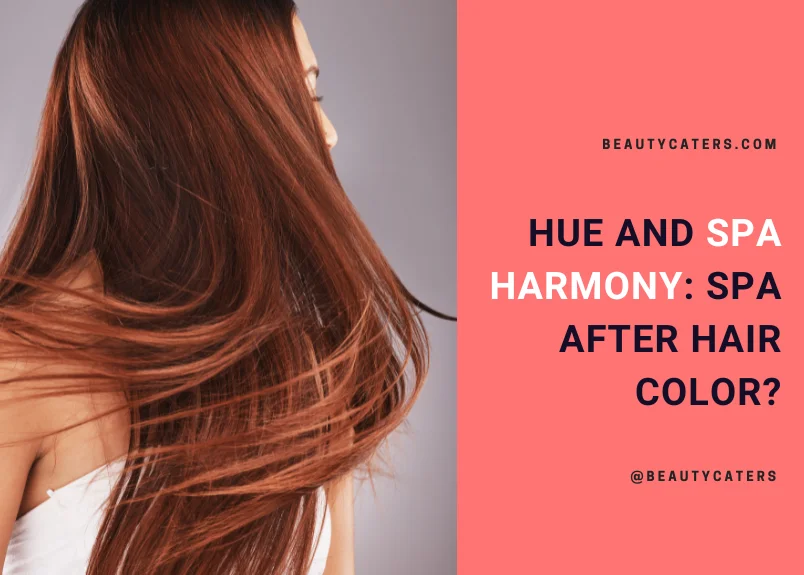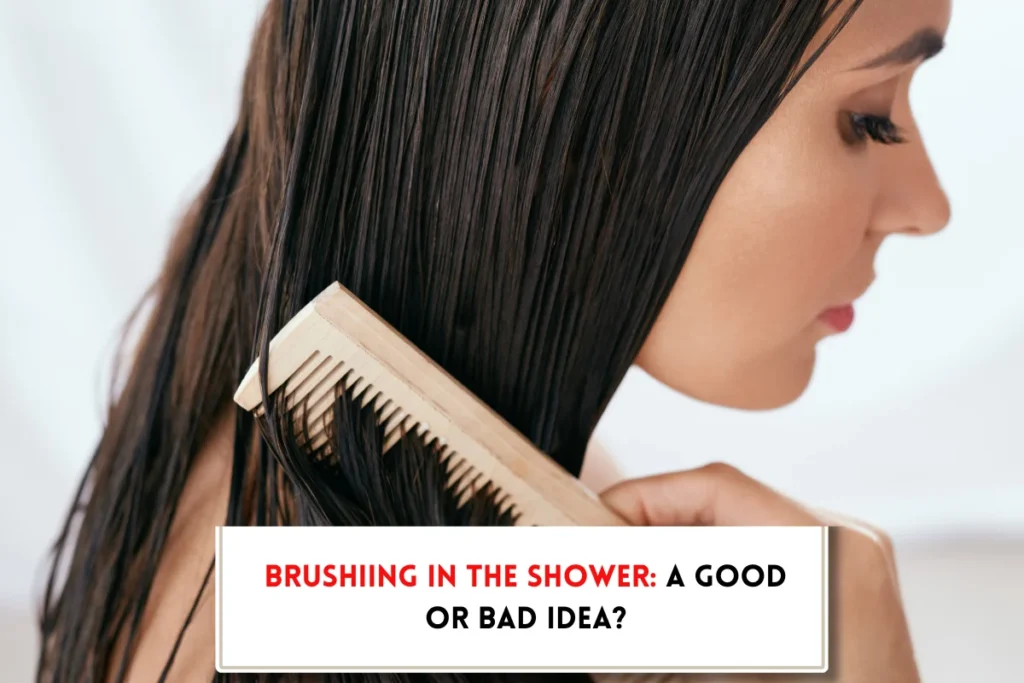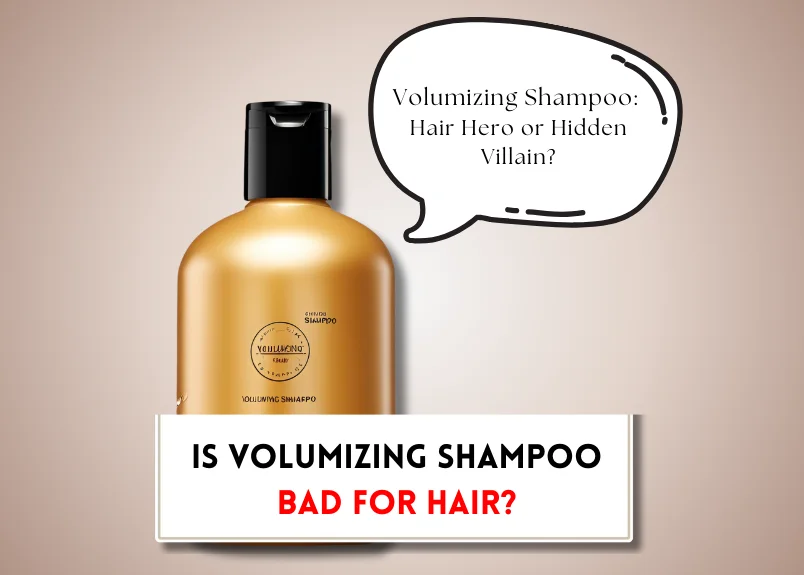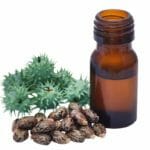“Can I mix hair color with conditioner?” A common hair styling question that popped up in my message.
Hair color mixed in conditioner seems an effective, quick hack; but how feasible is the option? Let me tell you there are pros and cons associated with the technique and certain thing you must consider. So, before you mix the two essentials and walk toward the shower, check out every aspect of the method and know can you really mix hair dye with conditioner?
- Which hair dye can you mix with conditioner?
- Factors to consider before you mix hair color with conditioner
- What are the benefits of mixing conditioner with hair dye?
- What are the drawbacks of mixing hair dye with conditioner?
- How to mix hair dye with conditioner and apply?
- Tips to get optimal results from hair dye and conditioner mixture
- Final Word: Can I mix hair color with conditioner?
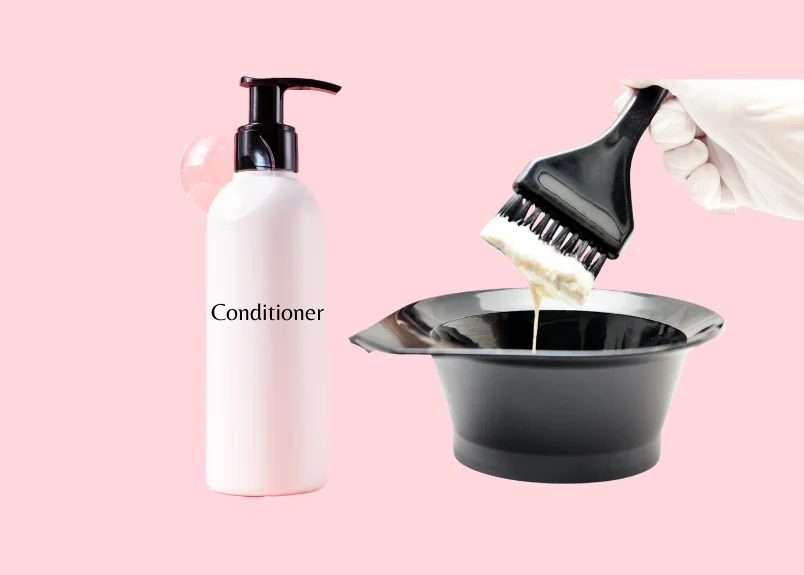
Which hair dye can you mix with conditioner?
While it might seem like a convenient shortcut, not all types of hair dye are compatible with conditioner, and doing so can potentially affect the dye’s effectiveness. Let’s explore which dyes can be mixed with conditioner and why.
- Permanent and demi-permanent dyes: Permanent and demi-permanent dyes are generally not recommended to be mixed with conditioner. These dyes work by penetrating the hair cuticle and reacting with the hair’s natural pigments. Conditioners, on the other hand, tend to have an acidic pH that can close the cuticle, hindering the dye’s ability to penetrate the hair shaft.
- Semi-Permanent dyes: These dyes offer temporary color that fades gradually over time. They are often used for subtle color changes or to experiment with different shades. Unlike permanent dyes, semi-permanent dyes can sometimes be mixed with conditioner. This help to create lighter or pastel tones, but it’s important to note that the color may fade faster than usual.
- Direct dyes: These dyes are primarily used for vibrant, temporary color. They work by coating the hair’s exterior rather than penetrating the shaft. Direct dyes are generally not compatible with conditioners. Mixing them can dilute the color intensity and reduce its longevity.
Also Read: How to remove splat hair color from hair?
Factors to consider before you mix hair color with conditioner
When deciding whether to mix conditioner with hair dye, several factors should be taken into account:
- Desired Color: The desired outcome plays a significant role. If you’re aiming for a dramatic color change or long-lasting results, it’s generally best to avoid mixing conditioner with permanent or semi-permanent dyes. However, if you’re seeking a subtle or temporary color, mixing with a conditioner might be a viable option.
- Hair Condition: The health and condition of your hair can also influence the compatibility of conditioner and dye. If your hair is damaged or dry, using a conditioner can help to improve its overall health. However, excessive conditioning can sometimes interfere with the dye’s application and results.
- Manufacturer’s Instructions: Always follow the manufacturer’s instructions for both the hair dye and conditioner. They provide specific guidelines on application, mixing, and potential compatibility issues.
What are the benefits of mixing conditioner with hair dye?
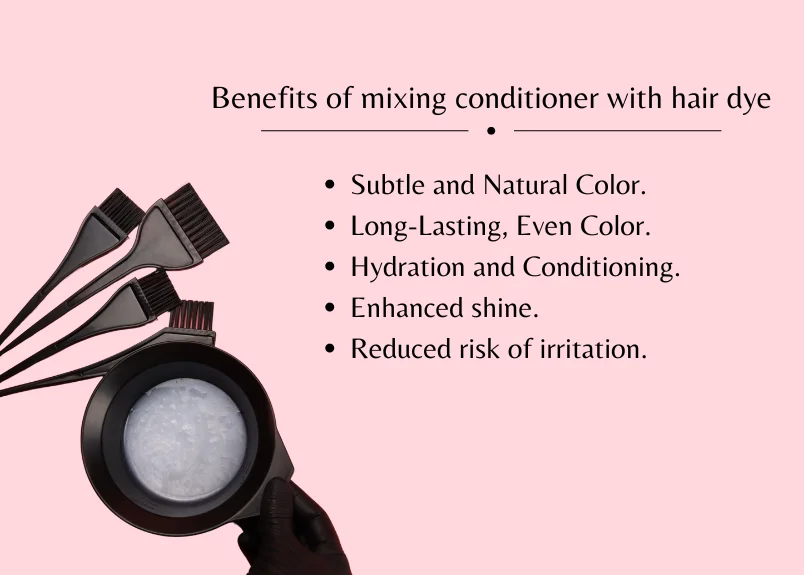
Mixing hair dye with conditioner offers several advantages for achieving a desired hair color while maintaining its health. Here are some of the key benefits:
- Subtle and Natural Color:
- Soft, gradual color: Unlike traditional hair dye applications, mixing conditioner with dye results in a more subtle and natural-looking color. The conditioner acts as a diluent, preventing the dye from penetrating too deeply into the hair shaft and altering its structure.
- Preserves hair structure: This approach helps to maintain the integrity of your hair, avoiding the artificial or harsh appearance that can sometimes result from using undiluted dye.
- Avoids unnatural tones: By gently depositing color onto the hair’s exterior, mixing conditioner with dye can help to prevent unwanted brassiness or unwanted tones.
- Long-Lasting, Even Color:
- Color retention: Conditioner acts as a sealant, locking in the color and preventing fading. This can lead to a longer-lasting color, reducing the need for frequent touch-ups.
- Reduced touch-ups: By extending the duration of your color, mixing conditioner with dye can save you time and money on maintenance.
- Consistent color distribution: Diluting the dye with conditioner helps to ensure even color application, preventing oversaturation in certain areas and ensuring a more uniform result.
- Hydration and Conditioning:
- Nourishment: Conditioner provides essential moisture and nutrients to your hair, promoting softness, shine, and overall health.
- Damage protection: It helps to protect your hair from the harsh chemicals often found in hair dyes, minimizing dryness, breakage, and other signs of damage.
- Healthy hair: By creating a protective barrier, conditioner helps to preserve the overall health of your hair while transforming its color.
- Additional Benefits:
- Reduced risk of irritation: Mixing conditioner with dye can help to reduce the risk of scalp irritation or allergic reactions, especially for those with sensitive skin.
- Enhanced shine: The conditioning properties of the conditioner can help to enhance the shine and luster of your hair.
- Versatility: This technique can be used for a variety of color changes, from subtle tones to bolder hues.
What are the drawbacks of mixing hair dye with conditioner?
While mixing hair dye with conditioner offers certain benefits, it’s important to consider the potential drawbacks:
- Scalp buildup: Conditioner can leave a residue on the scalp, potentially leading to buildup and irritation, which provide a breeding ground for fungi or bacteria, causing scalp infections, itchiness, or dandruff.
- Hair weakening and damage: Excessive conditioning, especially when mixed with hair dye, can disrupt the hair’s natural protein balance, leading to brittleness, breakage, and weakened strands.
- Uneven color results: The diluted nature of the dye and conditioner may increase the risk of streaking or uneven color distribution, especially on porous or damaged hair.
- Reduced color intensity: The diluted nature of the dye and conditioner may make it harder to achieve a vibrant or intense color. The color may fade more quickly.
- Increased costs and inconvenience: Mixing conditioner with dye often requires using more conditioner than when applying it alone. This can lead to increased costs, especially if you use premium-quality conditioners. Plus it is more time-consuming than applying undiluted dye, especially if you’re aiming for a precise and even application.
- Challenges with color removal: Conditioner can act as a protective barrier, making it more difficult to remove the color if you decide to change it. This can complicate the color removal process and potentially require additional steps or products, such as color-removing shampoos or professional treatments.
How to mix hair dye with conditioner and apply?
A DIY color-depositing conditioner is a gentle and effective option, to add subtle color, and moisturize your hair. Here is how you can do it:
- Prepare the base: Pour a small amount (1⁄3 cup) of white conditioner into a bowl. White conditioner ensures the dye doesn’t become distorted.
- Add the dye: Gradually add 1 tbsp (15 ml) of your chosen semi-permanent hair dye to the conditioner. For lighter tones, use less dye, and for darker shades, add more.
- Mix thoroughly: Stir the mixture until the dye is fully incorporated and no white spots remain.
- Wash your hair: Cleanse your hair with your regular shampoo to remove any buildup.
- Apply the mixture: Apply the conditioner-dye mixture to damp hair, focusing on the areas you want to color.
- Leave on: Leave the mixture in your hair for 5-30 minutes, depending on the desired color intensity. Cover your hair with a shower cap or plastic wrap to prevent staining.
- Rinse: Rinse thoroughly with cool water until the water runs clear.
Tips to get optimal results from hair dye and conditioner mixture
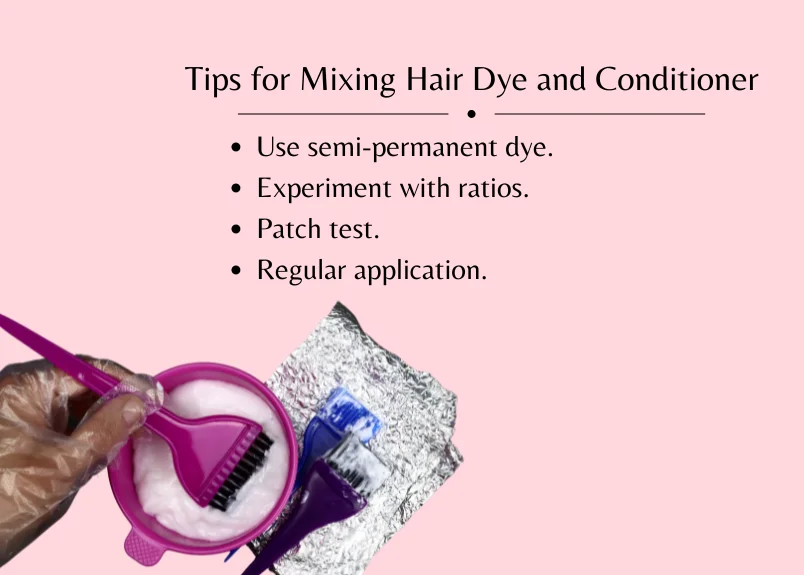
- Use semi-permanent dye: Permanent dyes may not mix well with conditioner and can result in uneven color.
- Experiment with ratios: Adjust the ratio of dye to conditioner to achieve your desired color intensity.
- Patch test: Before applying the mixture to your entire head, do a patch test on a small section of hair to check for any reactions or allergic responses.
- Regular application: For consistent color maintenance, use the color-depositing conditioner regularly.
Final Word: Can I mix hair color with conditioner?
While mixing hair color with conditioner can be tempting for a more convenient application, it’s generally not recommended. The chemicals in hair color and conditioner can react unexpectedly, potentially leading to uneven color results or damage to your hair. For optimal results, it’s best to follow the instructions provided with your chosen hair color product. Remember, a little extra effort can go a long way in achieving your desired hair color.

